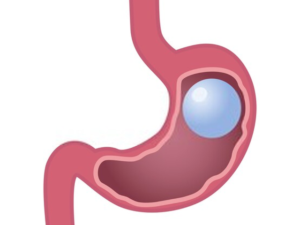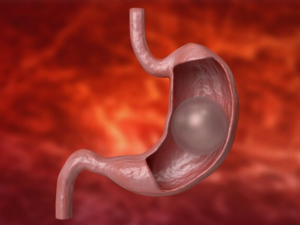Gastric Balloon
Gastric Balloon In Iran
Best gastric balloon surgery hospital in Iran
 More than 40,000 Iranian and foreign patients are going under gastric balloon surgery in Iran each month. Gastric balloon surgery in Iran is on top of the middle-east regarding its skilled specialists and surgeons. Here are the best hospitals for gastric balloon surgery in Iran:
More than 40,000 Iranian and foreign patients are going under gastric balloon surgery in Iran each month. Gastric balloon surgery in Iran is on top of the middle-east regarding its skilled specialists and surgeons. Here are the best hospitals for gastric balloon surgery in Iran:
- Treata Professional Hospital
- Gandi Hospital
- Moheb Mehr Hospital
There is a significant difference between the cost of gastric balloon surgery in Iran and other countries. The most important factors for the low price of it in Iran are:
- A large number of gastric balloon surgery hospitals in Iran.
- A large number of applicants for gastric balloon surgery in Iran.
Gastric balloon surgery cost in Iran varies depending on the gastric balloon surgery and the hospital. An average cost of gastric balloon surgery in Iran is $
Gastric balloon surgery cost in Iran in comparison with other countries
This surgery costs $10,000 in the U.S., $ 9,000 in Europe, $8,000 in Thailand and $5,000 in Turkey.
Best gastric balloon surgeon in Iran
More than 7.000 weight loss surgeries are being performed each year in Iran. Experienced Iranian doctors with an excellent record are performing the operations. One of the most important factors for choosing a good surgeon for gastric balloon surgery in Iran is a doctor has done many gastric balloon surgery. You can find the best doctors for gastric balloon surgery in Iran on our website by following their different experiences.
Why should you travel to Iran for a gastric balloon surgery?
Many patients travel to Iran for gastric balloon surgery. One of the reasons for this matter is Iranian specialists and surgeons who have high surgery success rates.
- Low cost of the gastric balloon in Iran
- Low cost of accommodation in Iran
- Well experienced doctors
- The high number of the gastric balloon in Iran
Gastric balloon surgery centres accordant with today's European standards are performing the highest quality operations in Iran. Another reason for gastric balloon surgery in Iran is its lower cost compared to other countries.
How long should I stay for gastric balloon surgery in Iran?
About Gastric Balloon
 Some obese people have tried so many diets and different lifestyles, but they couldn’t achieve what they want, and they dream of having a healthy, thin and beautiful body shape. Bariatric surgery is considered for people who are not able to control obesity by changing their lifestyle. It is a nonsurgical and straightforward procedure for reducing stomach volume. A gastric balloon has lots of benefits like minimal sedation and less invasive process. It is reported that the patient’s lipid levels and blood sugar levels are improved after this procedure. Patients lose approximately 20-30% of the excessive weight in about six months. This procedure is contraindicated for patients who had stomach surgery before, alcohol or drug addicts, patients with active gastrointestinal ulcers or cirrhosis and pregnant patients.
Some obese people have tried so many diets and different lifestyles, but they couldn’t achieve what they want, and they dream of having a healthy, thin and beautiful body shape. Bariatric surgery is considered for people who are not able to control obesity by changing their lifestyle. It is a nonsurgical and straightforward procedure for reducing stomach volume. A gastric balloon has lots of benefits like minimal sedation and less invasive process. It is reported that the patient’s lipid levels and blood sugar levels are improved after this procedure. Patients lose approximately 20-30% of the excessive weight in about six months. This procedure is contraindicated for patients who had stomach surgery before, alcohol or drug addicts, patients with active gastrointestinal ulcers or cirrhosis and pregnant patients.
Recommended for
- The patients whose BMI is between 30 to 40 with comorbidities like diabetes or high blood pressure, sleep apnea and they already tried diet and exercise but cannot lose weight
- Patients older than 18-years old
- patients must be willing to make major changes in their eating habits and lifestyle
Before Gastric Balloon
The bariatric surgeon may recommend a pre-operative diet of two weeks before the surgery, which has protein but carbohydrates and fat limitations. This diet makes the body ready for the operation. Patients should tell the surgeon their complete medical history and medicines and supplements intake; he or she asks for laboratory tests to check body health completely. It is essential to know that patients should try to stop smoking for better outcomes, and they should stop smoking at least 30 days before surgery. They should discuss the regimen which must be followed after the procedure and make sure that they can obey the new regimen rules. Eating solid food from 12 hours and drinking liquids 6 hours before the procedure is prevented.
During Gastric Balloon
Gastric balloon procedure is an out-patient procedure which is usually done under mild sedation or may need general anaesthesia. The doctor sends the balloon through a catheter from the mouth to the stomach. In the next step, he or she will send the camera to the stomach to see the inside. With this camera, the doctor will fill the balloon to the desired size, and after ensuring the proper location and appropriate balloon volume, the procedure ends. The balloon stays in place for the next 3 to 6 months.
Recovery
Usually, patients can leave after resting for some hours in the hospital with instructions and prescribed medicines. Serum therapy is usually prescribed to prevent dehydration in the first days after the surgery. They can start eating through drinking liquids from six hours after the procedure. The liquid regimen should be continued for one week. Soft foods can be added from the second week and usually in the 3rd week after the procedure; patients can eat regular food.
